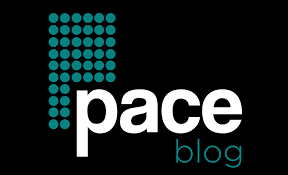In the fast-paced and competitive world of modern business, employee engagement is more crucial than ever. One of the most effective ways to enhance engagement and drive performance is through recognition. When employees feel appreciated, they are more motivated, productive, and committed to their work. Recognition is not just a nice-to-have; it is a powerful tool that can significantly impact an organization’s success. This article explores how appreciation drives performance, effective recognition strategies, integrating recognition into team building activities, and measuring the impact of recognition programs.

The Psychology of Recognition
Understanding the psychological impact of recognition on employees is key to leveraging it effectively. Recognition fulfills basic human needs for appreciation and belonging, which are fundamental to psychological well-being. When employees are recognized for their efforts, it reinforces their sense of value and contribution to the organization, boosting their self-esteem and motivation.
The correlation between recognition and increased motivation: Research shows that employees who feel appreciated are more likely to go above and beyond in their roles. Recognition acts as a positive reinforcement, encouraging employees to maintain high performance levels and strive for continuous improvement. This heightened motivation translates into increased productivity, creativity, and overall job satisfaction.
Effective Recognition Strategies
Implementing effective recognition strategies is essential for maximizing their impact. Here are some best practices:
- Be Timely and Specific: Recognition should be given promptly after the achievement to reinforce the behavior you want to encourage. Specificity matters; clearly articulate what the employee did well and how it contributed to the team or organization.
- Use a Mix of Formal and Informal Methods: Formal recognition programs, such as employee of the month awards or performance bonuses, provide structured ways to acknowledge achievements. Informal methods, like verbal praise, thank-you notes, or public acknowledgment in meetings, can be equally powerful and more frequent.
- Personalize the Recognition: Tailor recognition to the individual preferences of employees. Some may appreciate public recognition, while others may prefer private acknowledgment. Understanding your team members’ preferences ensures that recognition is meaningful and appreciated.
- Encourage Peer-to-Peer Recognition: Creating a culture where employees recognize each other fosters a supportive and collaborative environment. Peer recognition can be facilitated through platforms that allow employees to give kudos or shout-outs to their colleagues.
Examples of formal and informal recognition methods:
- Formal: Annual awards ceremonies, bonuses, promotions, certificates of achievement
- Informal: Verbal praise, handwritten thank-you notes, shout-outs in team meetings, digital badges
Integrating Recognition into Team Building
Team building events are an excellent opportunity to incorporate recognition elements. These programs not only strengthen team cohesion but also provide a platform for appreciating individual and collective achievements.
How team building events can incorporate recognition elements:
- Celebrating Milestones: Use team building events to celebrate project completions, anniversaries, or significant achievements. This reinforces the importance of the accomplishment and allows the whole team to share in the recognition.
- Group Acknowledgment: During team building exercises, take moments to acknowledge individual contributions that have helped the team. This can be done through activities where team members share positive feedback about each other.
- Recognition Rituals: Develop rituals or traditions within team building activities that focus on appreciation, such as starting meetings with shout-outs or ending sessions with a round of applause for team efforts.
Examples of team building exercises that include appreciation:
- Peer Recognition Circles: Team members sit in a circle and take turns sharing something they appreciate about the person next to them. This exercise builds trust and mutual respect.
- Achievement Wall: Create a wall where team members can post notes of appreciation for their colleagues. This visual display of recognition serves as a constant reminder of the team’s collective achievements.
- Awards Night: Organize a fun awards night where team members receive humorous or heartfelt awards based on their contributions and characteristics. This can lighten the mood and strengthen bonds.
The benefits of combining recognition with team bonding efforts:
Integrating recognition into team building activities not only reinforces positive behaviors but also enhances the overall team dynamic. It fosters a culture of appreciation, where team members feel valued and supported, leading to higher morale and stronger collaboration. This combination can significantly improve both individual and team performance.

Measuring the Impact of Recognition
Assessing the effectiveness of recognition programs is crucial for understanding their impact and making necessary adjustments. Here are some methods for measuring the impact of recognition:
- Surveys and Feedback: Regularly solicit feedback from employees about the recognition program. Use surveys to gauge satisfaction levels and gather suggestions for improvement.
- Performance Metrics: Track performance indicators such as productivity, quality of work, and employee retention rates. Improved metrics can often be linked to effective recognition practices.
- Engagement Scores: Use employee engagement surveys to measure changes in engagement levels. High engagement scores typically correlate with strong recognition practices.
Key performance indicators (KPIs) to track engagement and performance improvements:
- Employee Satisfaction Scores: Measure overall satisfaction with the work environment and recognition efforts.
- Turnover Rates: Monitor changes in employee turnover rates as a decrease may indicate higher engagement and satisfaction.
- Productivity Metrics: Track productivity levels to see if there are improvements correlated with recognition initiatives.
Conclusion
Recognition is a powerful driver of employee engagement and performance. By understanding the psychological impact of appreciation, implementing effective recognition strategies, and integrating recognition into team building activities, organizations can create a positive and productive work environment. Measuring the impact of these efforts ensures that recognition programs continue to evolve and meet the needs of employees. Leaders who prioritize recognition and appreciation will see significant benefits in terms of higher morale, better performance, and a more cohesive and motivated team.

